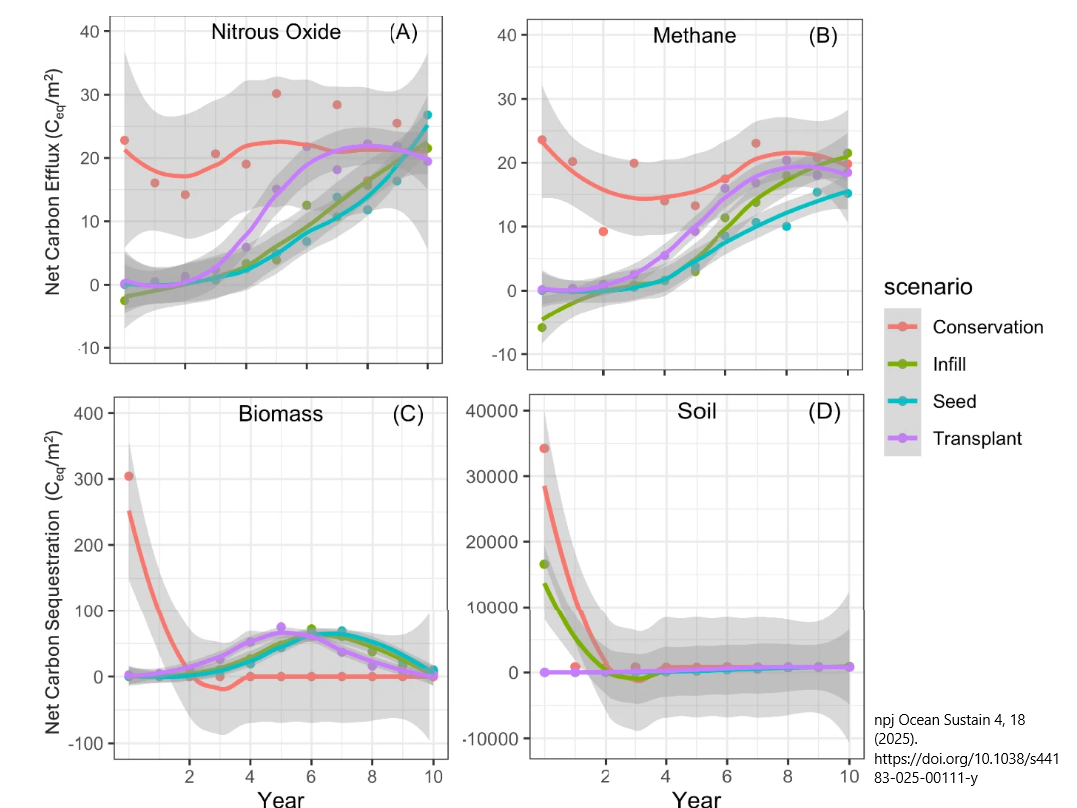
Seagrass habitats support biodiversity, improve water quality, protect coastlines, and sequester carbon, among other essential ecosystem functions, yet they are declining worldwide due to human activity. Seagrass restoration and conservation can act as nature-based solutions for climate change, garnering growing interest from a diversity of stakeholders globally. Despite this interest, no seagrass projects have yet received carbon credits under international voluntary carbon standards. There is a clear need to better understand potential carbon mitigation outcomes of seagrass conservation and restoration practices. Here, we developed a mechanistic model based on a temperate meadow of Zostera marina to estimate carbon benefits (including net carbon dioxide removals, reductions, and methane and nitrous oxide fluxes) over 10 years as a result of four theoretical seagrass management scenarios, selected for their prevalence and potential—(1) restoration via seeding, (2) restoration via transplanting, (3) conserving a meadow and associated sediment from loss (e.g., from dredging), and (4) infilling an area with sediment prior to transplanting. We found significant differences and high variability in carbon benefits between these management scenarios. Restoration via transplant led to higher carbon gains than restoration via seeding, driven by more rapid areal bed expansion in transplanted meadows. However, the infill (adding 1 m of sediment) and conservation (preventing loss of 1 m of sediment) scenarios had total carbon benefits roughly 13–33 times (respectively) higher than the seeding and transplanting scenarios in which no sediment was mobilized. Within the model presented here, the minimum estimated revenue shows a 6 Ha seeding project generating as little as $1189 over 10 years (39.6 ± 6.2 T CO2eq), while a 100 Ha conservation project could generate a maximum of $1.53 million over this same time period (21,910 ± 2196 T CO2eq), excluding costs for project implementation and MRV (monitoring, reporting and verification). Voluntary carbon credit revenue variability (ranging from $198 to $15,337 per Ha) is driven by project size, project approach, and carbon price, among other factors. This work highlights the need for careful, context-specific consideration for if and how carbon finance might support seagrass recovery goals. Seascape-level approaches that pair strategic sediment management and avoided emissions with habitat restoration may lead to the highest climate mitigation benefits, while simultaneously supporting biodiversity and other ecosystem functions.












